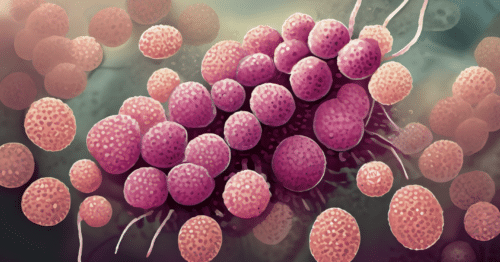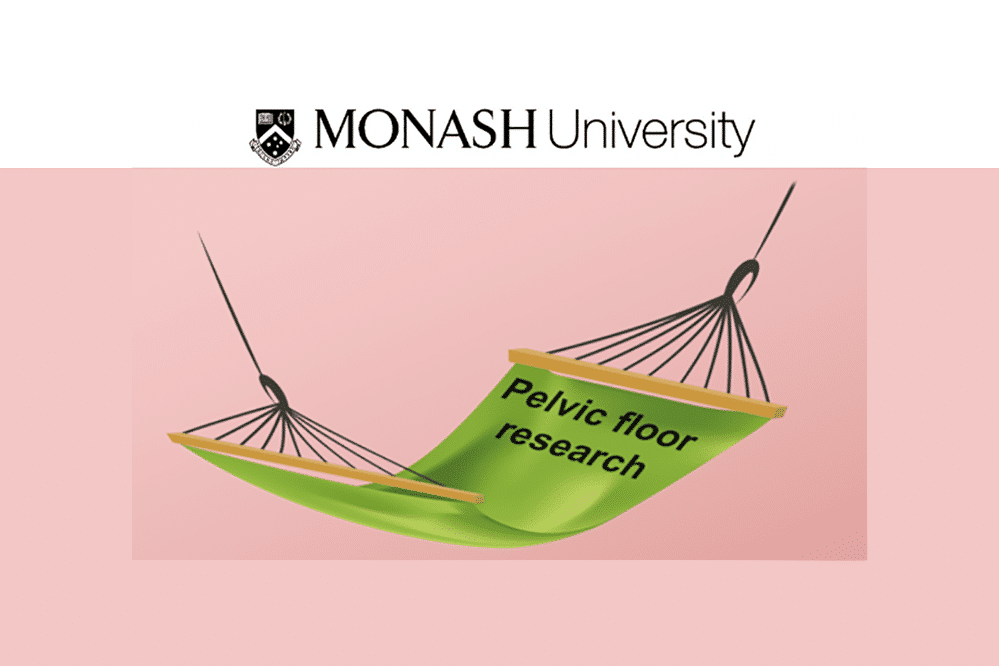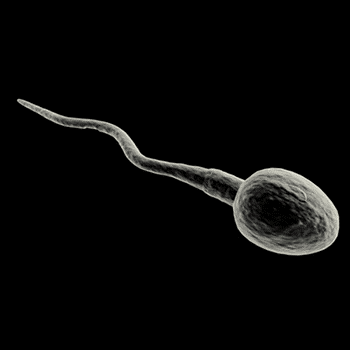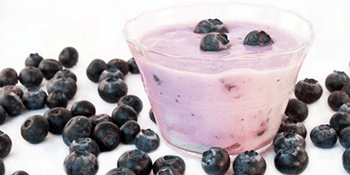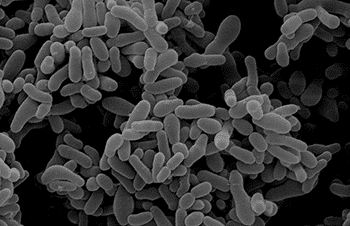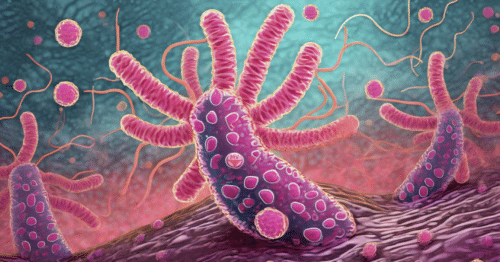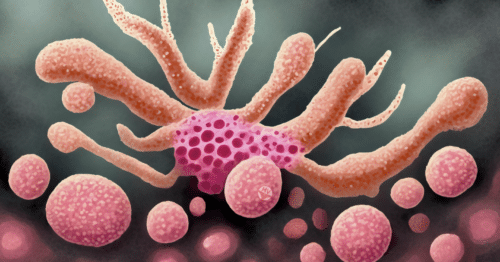Study: do circumcised penises mean less vaginal infections? (spoiler alert – yes)
A 2009 study examining the impact of male circumcision on female vaginal health has found that circumcised men may offer their partners reduced risks of certain vaginal infections, including bacterial vaginosis (BV) and trichomonas. The research highlights the potential role of the foreskin in harboring bacteria that could negatively affect
Tetracyclines for non-antibiotic uses
Tetracyclines, known for their antibiotic properties, have a wide range of non-antibiotic uses thanks to their ability to interfere with protein synthesis. Discovered in 1948, these compounds have evolved into a versatile tool in treating dermatological conditions, autoimmune disorders, and even preventing tumour growth and cardiovascular diseases. Their ability to
Study: Ginkgo biloba for female sexual dysfunction caused by SSRI use
Sexual dysfunction, a common side-effect of SSRI antidepressants, may be effectively treated with Ginkgo biloba, according to recent studies. With success rates as high as 91% for women, Ginkgo biloba offers hope for those experiencing decreased arousal, lubrication issues, and difficulties achieving orgasm due to antidepressant use. Research highlights the
Study: the impact of pH alone on BV biofilms
A groundbreaking lab study reveals the significant role pH levels play in the formation and disruption of Gardnerella vaginalis biofilms, crucial in understanding and managing Bacterial Vaginosis (BV). By altering pH levels, researchers observed a dramatic reduction in bacterial counts, shedding light on potential therapeutic strategies.
Study: Chitosan polymers tested for BV biofilm destruction capacities
A recent study reveals the potential of chitosan, a biopolymer derived from crustacean shells, in disrupting biofilms associated with bacterial vaginosis (BV), outperforming traditional treatments. This finding could revolutionize the approach to treating BV, emphasizing chitosan's bioadhesive properties and its effectiveness at various pH levels without the dependency on charge
Staphylococcus bacterial biofilms
Staphylococcus aureus biofilms found in tampons and menstrual products pose a significant health risk, highlighting the need for advanced detection methods beyond traditional cultures. This study reveals the presence of S. aureus in all examined specimens, emphasizing the bacteria's role in toxic shock syndrome and the importance of recognizing nonculturable
Clinical trials: is vulvar vestibulitis syndrome (vestibulodynia) caused by the pill? STUDY NOW CLOSED
The Centers for Vulvovaginal Disorders in the US conducted a study hypothesizing that oral contraceptive pills might cause vulvodynia by altering hormone receptors in the vulvar vestibular mucosa. This groundbreaking research aimed to identify potential genetic markers to predict susceptibility to vulvodynia, focusing on the thinning of the vulvar vestibule
Study: antibiotics can be a dud for BV
A recent study has cast doubt on the effectiveness of the WHO-recommended antibiotic treatments for bacterial vaginosis (BV), with a significant portion of women remaining untreated after standard therapy. This research, involving 482 women, highlights the need for a reevaluation of current BV treatment protocols and suggests that the one-size-fits-all
Use of oral zinc in lichen planus of the mouth and vulva
Lichen planus, a condition affecting the mouth and vulva, shows significant improvement with oral zinc therapy. Research indicates that individuals with lichen planus have lower zinc levels, suggesting a deficiency linked to the condition. Zinc, crucial for skin healing and immune function, has been found to substantially alleviate symptoms in
Can meditation improve your sex life?
Research has illuminated the profound impact mindfulness and meditation have on enhancing female sexual desire, reducing sex-related distress, and improving psychological well-being. This article delves into how mindfulness practices not only bridge the gap between mental and physical arousal in women but also contribute to greater sexual motivation and consciousness,
Dioxins in US tampons – why it isn’t a concern
Recent concerns over dioxins in tampons have sparked widespread debate. However, advancements in manufacturing and stringent FDA testing reveal that the levels of dioxins in tampons are negligible, posing no health risk. This article demystifies the scare, explaining the nature of dioxins, the shift in tampon production methods, and why
Study: the impact of temperature and pH on biofilm formation – it matters!
A pivotal study reveals the significant effects of temperature and pH levels on the formation of bacterial biofilms within the human vagina, highlighting the conditions under which harmful bacteria such as Pseudomonas aeruginosa, Klebsiella pneumoniae, and Vibrio cholerae can thrive. The research underscores the importance of maintaining the vagina's natural
Impact of Cinnamomum on Staphylococcus aureus biofilms
Cinnamomum and its derivative, cinnamaldehyde, have shown significant potential in combating methicillin-resistant Staphylococcus aureus (MRSA) biofilms, presenting a hopeful alternative to conventional antibiotics. These substances not only inhibit biofilm formation on medical surfaces but also disrupt preformed biofilms and reduce the expression of crucial genes involved in biofilm maturation and
Study: BV can be sexually transmitted
Recent research confirms that bacterial vaginosis (BV) can indeed be sexually transmitted, involving a specific type of bacteria, Gardnerella vaginalis, that affects both men and women. This groundbreaking study highlights the importance of treating both partners to prevent re-transmission, challenging long-standing debates and providing clear evidence of the sexual transmission
Study: L. crispatus competitively excludes G. vaginalis
A groundbreaking 2014 study reveals how Lactobacillus crispatus, a beneficial microbe found in the human vaginal tract, employs novel mechanisms to outcompete Gardnerella vaginalis, thereby potentially offering protection against bacterial vaginosis. This research highlights the importance of L. crispatus in maintaining vaginal health by preventing the adhesion of harmful pathogens
Study into the metabolic ‘signature’ of vaginas with BV
A groundbreaking 2015 study has revealed that vaginas affected by bacterial vaginosis (BV) possess distinct metabolic signatures compared to healthy ones. By analyzing the metabolite profiles of cervicovaginal fluids, researchers identified significant differences in amino acids, dipeptides, and inflammation biomarkers, providing crucial insights into BV's impact on vaginal health and
Lover got fishy/off bad vag? You have it too.
Bacterial Vaginosis (BV) is not just a women's issue; men can carry and transmit BV-related bacteria too. Understanding the role of male carriers in the spread and re-infection of BV is crucial for effective treatment and prevention. This article explores how men can be asymptomatic carriers of BV, the importance
Oral pilocarpine can moisten a dry vagina
Pilocarpine, traditionally used for dry mouth and eyes, shows promise in treating vaginal dryness, particularly in perimenopausal women undergoing chemotherapy. A 12-week study revealed significant improvements in vaginal moisture, with minimal side effects, marking it as a potential game-changer for those affected by this condition.
Study: Coriander and thyme essential oils for vaginal infections
A groundbreaking study reveals that coriander and thyme essential oils could be potent alternatives for the treatment of vaginal infections caused by bacteria and fungi. Showcasing bactericidal and fungicidal activities, these oils present a promising avenue for gynaecological treatments, especially against strains like E.coli, S. aureus, and C. albicans.
CLOSED Clinical Trial: Do you have experience with lichen sclerosus? Science needs you!
The James Lind Alliance and BSSVD invite individuals affected by lichen sclerosus, including patients, carers, and healthcare professionals, to participate in a crucial survey aimed at shaping future research priorities and improving treatment strategies. This initiative represents a significant step towards understanding and addressing the needs of those impacted by
Study: L. crispatus probiotic cheese for preventing vaginal infections
A groundbreaking study explores Squacquerone cheese as a novel carrier for Lactobacillus crispatus, aiming to harness its antimicrobial properties for preventing vaginal infections. This research highlights the cheese's potential in maintaining L. crispatus's viability, even under stress, and its higher acceptability compared to control cheese. While still in the lab
DEADLINE SEPT 2018 National Vulvodynia Association (NVA) Invites Medical Research Proposals on Generalised Vulvodynia
The National Vulvodynia Association (NVA) is calling for medical research proposals focusing on the causes or treatment of Generalised Vulvodynia. With deadlines in September and October 2018, the NVA offers grants up to $50,000 for studies aimed at understanding or treating this condition. This is an opportunity for researchers in
Study: species of probiotic bacteria in water kefir
A groundbreaking study by Gulitz et al. has revealed the rich microbial diversity in water kefir, highlighting the predominance of Lactobacillus species among over 450 bacterial isolates. This research delves into the traditional preparation of water kefir, a fermented drink known for its probiotic benefits, low sugar content, and slight
Study: more Australian women using IUDs and implants
Recent research by Roy Morgan reveals a significant shift in contraceptive preferences among Australian women aged 18-49, with a notable rise in the use of IUDs and hormonal implants over the traditional oral contraceptive pill. This study, encompassing data from July 2007 to June 2015, highlights evolving trends in contraception,
Vaginal bacteria around the world
The composition of vaginal bacteria varies significantly around the world, influenced by ethnicity and maternal lineage. This diversity has profound implications for the treatment and understanding of vaginal health on a country-specific basis. Research shows distinct bacterial profiles among women of African descent, Indian women, and Caucasian women from Western
Study: herbal medicine in PCOS improves symptom management
A groundbreaking study reveals that herbal remedies, including tribulus, peony, liquorice, cinnamon, and St John's wort, alongside lifestyle modifications, offer significant improvements in managing symptoms of polycystic ovarian syndrome (PCOS). This approach led to more regular periods, weight loss, reduced insulin levels, and enhanced mood, showcasing the potent role of
Study: Vagisil kills your good bacteria after 24 hours
A revealing study has shown that Vagisil, commonly used for vaginal 'hygiene', can suppress and kill the crucial L. crispatus bacteria within 24 hours. This bacterium is essential for maintaining vaginal health and protecting against STIs, cancer, and reproductive issues. The study highlights the dangers of using such products without
Study: Treating cervical infections and dysplasia with high-dose vitamin D
A groundbreaking study explores the effectiveness of high-dose vitamin D in treating recurrent cervical infections and dysplasia, showing promising results. With 79% of participants reporting fewer vaginal problems after treatment, this research highlights a potential new approach to cervical health, though further study is needed.
CLOSED DEC 2019: Be part of a pelvic floor study from your couch! (ends Dec 2019)
Monash University researchers are seeking women to participate in a study to compare pelvic floor issues between those with and without breast cancer. Participation involves measuring waist circumference, height, and weight, and sharing experiences related to pelvic floor function. This confidential study offers a chance to contribute to science effortlessly.
Obesity and BV
Recent research has illuminated a connection between obesity and bacterial vaginosis (BV), highlighting the role of adipose tissue as an active immunological organ that can disrupt the vaginal microbiome. This article delves into the mechanisms behind this link, including the impact of obesity on immune function and insulin resistance, and
Experimental models for investigating female sexual function and dysfunction: a short review
Despite limited research on female sexuality, recent developments in experimental models are shedding light on the physiological and biochemical mechanisms behind female sexual arousal. These models, ranging from in vivo animal studies to in vitro tissue analyses, aim to unravel the complexities of the vagina, vulva, and clitoris' roles in
Study: BV, HIV and herpes – is all what it seems?
A study delves into the relationship between herpes (HSV-1 and HSV-2), bacterial vaginosis (BV), and HIV, revealing a complex interplay that affects women's health. Focusing on a high-risk group of sex workers in Burkina Faso, the research finds a significant link between BV and HSV-2, suggesting that the lack of
What is genital shedding in herpes?
Genital shedding in herpes simplex virus type 2 (HSV-2) carriers is a crucial process of virus replication and transmission. A significant study reveals that carriers can infect partners during shedding, even without symptoms. Understanding the nuances of viral shedding, including its frequency and impact on transmission, is vital for both
Study: How cinnamon oil interferes with biofilm formation
Recent studies have unveiled the potent antimicrobial properties of cinnamon oil against biofilm formation by various bacteria, including Staphylococcus epidermidis and Pseudomonas aeruginosa. Notably, the active component cassia not only inhibits biofilm formation but also detaches and kills existing biofilms, demonstrating effectiveness comparable to, or even surpassing, certain antibiotics. This
Hymen injuries in children
Hymen injuries in children can result from various activities or accidents, and while they heal rapidly, proper care and examination are crucial. This article delves into the causes, including sexual abuse, the healing process, and the importance of medical and psychological care for the affected children and their families. It
Study: Using boric acid and G. vaginalis
A groundbreaking lab study reveals the significant impact of vaginal pH levels on Gardnerella vaginalis biofilms. By adjusting the pH to 4.5, researchers observed a dramatic reduction in G. vaginalis counts and disintegration of established biofilms, highlighting a promising approach for treating bacterial vaginosis.
Study: can calendula cure BV?
A recent study explored the efficacy of calendula extract-based cream versus metronidazole antibiotic cream in treating bacterial vaginosis (BV) over a week. With eighty women participating, both treatments rendered participants symptom-free after one week, though the calendula group experienced more itching. This study highlights the potential of calendula as an
PCOS, BV and the vaginal microbiome
Polycystic ovarian syndrome (PCOS) is closely linked with changes in the vaginal microbiome, showing a higher incidence of bacterial vaginosis (BV) and microbial imbalances compared to those without PCOS. This article delves into the research surrounding the relationship between PCOS, the vaginal microbiome, and the prevalence of BV, highlighting the
Study: Subtypes of G. vaginalis
A groundbreaking study reveals the connection between various G. vaginalis subtypes and their impact on vaginal health, highlighting a significant correlation between polyclonal G. vaginalis infection and the risk of bacterial vaginosis (BV). By analyzing the bacterial loads in clinical swabs, researchers uncovered the prevalence and distribution of G. vaginalis
Study: tea tree and coconut vinegar for inhibiting biofilm growth and killing G. vaginalis
A study investigating the effects of tea tree oil and coconut vinegar on Gardnerella vaginalis, the primary bacteria in bacterial vaginosis, reveals promising results. While both substances showed potential in inhibiting biofilm formation and killing planktonic bacteria, their ability to dissolve existing biofilms remains untested. This research highlights the importance
Study: the impact of freezing techniques on lactobacilli survival rates
Exploring the impact of freezing on lactobacilli, this study reveals that slow-cooling and pre-freezing stress significantly improve bacterial survival rates. It highlights the adaptability of bacteria to freezing conditions, offering insights into preserving probiotics effectively.
Study: Cryopreserved donor sperm contains G. vaginalis (BV) seeds
Recent findings from a 2010 study reveal that cryopreserved donor sperm might carry Gardnerella vaginalis, a key agent in bacterial vaginosis (BV), raising concerns over the transmission of BV through artificial insemination. This groundbreaking research highlights the need for further investigation into the safety protocols of sperm donation and IVF
Study: the relationship between endometritis (inflammation of the endometrium) and BV
A pivotal study investigates the relationship between bacterial vaginosis (BV) and chronic endometritis, revealing that women with BV are more likely to suffer from chronic endometritis. This research, conducted on 41 women with symptoms like vaginal discharge or pelvic pain, shows a significant link between BV and the inflammation of
Study: Lactobacillus rhamnosus is resistant to antibiotics
A groundbreaking study reveals that Lactobacillus rhamnosus, a beneficial probiotic, can resist and even thrive under certain concentrations of metronidazole, the common antibiotic for bacterial vaginosis (BV). This resistance suggests a potential for combined antibiotic and probiotic treatments to more effectively combat BV, highlighting the complex interaction between medication and
Study: myo-inositol with folic acid for PCOS
Recent studies reveal that supplementation with myo-inositol and folic acid can markedly alleviate symptoms of PCOS, including hirsutism and acne. This groundbreaking research shows promising results for women suffering from PCOS, offering a potential pathway to improved health and well-being through the regulation of insulin sensitivity and reduction of androgens.
UTI study: negative culture but antibiotics help
A groundbreaking survey by Chronic UTI Australia sheds light on the perplexing scenario where UTI sufferers experience symptom relief from antibiotics despite negative culture results. Over a third of participants reported enduring UTI symptoms for 2-5 years, with a significant number seeing improvement post-antibiotics. This study, involving participants mainly from
Smoking and BV
Smoking not only increases the risk for bacterial vaginosis (BV) and sexually transmitted infections (STIs) but also alters the vaginal microbiome, making smokers more susceptible to urogenital infections. This article delves into how smoking affects the immune system and vaginal health, highlighting the importance of maintaining a healthy microbial balance
Study: Retrocyclin as a G. vaginalis biofilm inhibitor
A recent study by Hooven et al highlights the potential of Retrocyclin (RC-101) in combating bacterial vaginosis (BV) by inhibiting the formation of G. vaginalis biofilms without affecting the normal vaginal flora or being toxic to human cells. While ineffective against planktonic bacteria, RC-101's biofilm disruption capabilities and its role
How to make yoghurt with your vaginal bacteria
In a daring culinary and scientific experiment, Cecilia Westbrook, an MD/PhD-qualified scientist, created yoghurt using her own vaginal secretions, exploring the symbiotic community of lactobacilli that reside in the vagina. Despite its tangy taste, experts caution against potential health risks.
Study: men carry BV-associated bacteria on and in their penises
A 2016 study delves into the transmission of bacterial vaginosis (BV)-associated bacteria between heterosexual partners, highlighting the significant role of male genital microbiota and the impact of circumcision on these microbial communities. This research underscores the interconnectedness of sexual partners' microbiomes and sheds light on potential pathways for BV transmission
Study: vaginal and clitoral tissue changes with oestrogen levels (rabbits)
A study on rabbits reveals how lower oestrogen levels at menopause can negatively affect female sexual arousal by altering the tissues responsible for engorgement. This research highlights the significant role of oestrogen in maintaining the structure and function of vaginal and clitoral tissues, suggesting a link between decreased oestrogen and
Study: How doctors differ in screening for female sexual dysfunction
Female Sexual Dysfunction (FSD) is a critical yet under-addressed health issue, with a mere 39% of women receiving screenings during well-woman appointments. This study delves into the screening practices of healthcare providers, revealing a significant disparity in the attention given to FSD compared to other routine health checks. It underscores
Study: thyme cream for bacterial vaginosis
A pioneering study has explored the efficacy of Zataria multiflora, a thyme variant, as a cream for treating bacterial vaginosis and trichomoniasis, comparing it directly with traditional antibiotic treatments. Despite some side effects like increased itching and vaginal burning in a minority of participants, thyme cream has shown promise as
Study: Does strain matter? G. vaginalis
A comprehensive study identifies eight distinct biotypes of Gardnerella vaginalis in women with bacterial vaginosis, revealing no correlation between biotype and virulence, but a varied presence in women with abnormal discharge. This groundbreaking research highlights the complexity of bacterial vaginosis and the need for further investigation into the role of
High-tech mesh for pelvic prolapse
Australian researchers are at the forefront of developing a groundbreaking mesh for pelvic organ prolapse (POP) treatment, designed to integrate seamlessly with the patient's body. This innovative mesh, coated in the patient's uterine cells, aims to address the high complication rates and chronic pain associated with conventional mesh treatments. Developed
What is Gram staining?
Gram staining is a critical laboratory method for differentiating bacteria into gram-positive or gram-negative, based on their cell wall composition. Developed by Hans Gram, this technique involves staining bacteria with gentian violet, allowing for the identification of bacteria types under a microscope. This method is particularly important in diagnosing bacterial
Study: DNase disrupts biofilm of G. vaginalis
A 2013 study revealed DNase's ability to inhibit Gardnerella vaginalis biofilms, suggesting a novel treatment method for bacterial vaginosis (BV). While DNase shows promise in disrupting biofilms essential for G. vaginalis survival, its application in humans is still under research. This enzyme, also used in cystic fibrosis treatment, is not
Study: 5-day BV antibiotic treatment flop
A recent study reveals that a 5-day course of the antibiotic moxifloxacin is not a one-size-fits-all solution for bacterial vaginosis (BV), as it fails to eliminate the bacterial biofilm in many cases. Despite some women experiencing significant clinical improvement, the stubborn nature of Gardnerella vaginalis biofilms means that alternative treatments,
Study: Glycosulfatase and it’s relationship with BV
Recent research highlights the significant role of glycosulfatase, a mucolytic enzyme, in the development of bacterial vaginosis (BV) by breaking down the mucosal barrier, facilitating bacterial colonization. This study, involving 61 women, demonstrates a higher glycosulfatase activity in those with BV, suggesting a direct link between the enzyme's activity and
Study: Lactobacillus attacks G. vaginalis biofilm
Recent studies highlight the power of Lactobacillus species, particularly L. reuteri RC-14, in attacking and dissolving the biofilms created by Gardnerella vaginalis. This breakthrough offers a promising alternative to traditional treatments that have failed to effectively combat the biofilms associated with bacterial vaginosis. The study showcases the specificity of the
Study: Gardnerella vaginalis – links with male infertility?
A recent study investigates the presence of Gardnerella vaginalis in the semen of men attending fertility clinics and its potential impact on sperm quality and male fertility. Despite its high detection rate, findings suggest that G. vaginalis does not significantly affect sperm quality, challenging assumptions about its role in male
DEADLINE PASSED – Never had an orgasm or find it difficult? Female Study Participants Wanted ASAP! (It’s free!) Deadline 21 Feb 2018
Dr. Erica Marchand, a licensed psychologist, is offering a free online course for women who have difficulty achieving orgasms or have never experienced one. This unique opportunity provides participants with video lessons, homework exercises, and live support aimed at enhancing sexual pleasure and understanding. With a deadline on 21 February,
Study: Platelet-rich Plasma (PRP) for lichen sclerosus
A pioneering study by the Centers for Vulvovaginal Disorders explores the use of Platelet-rich Plasma (PRP) in treating lichen sclerosus. This research, involving fifteen women, aims to harness PRP's healing proteins to improve tissue recovery without the risk of allergies or scarring. PRP, derived from the patient's own blood, shows
Study: BV and the vaginal immune response as it relates to HIV infection
A pivotal study delves into how bacterial vaginosis (BV) triggers an inflammatory response in the vagina and cervix, potentially doubling the risk of HIV infection. This inflammation, marked by specific inflammatory markers, may compromise mucosal integrity and innate immunity, elevating HIV acquisition and transmission rates. The study also highlights the
CLINICAL TRIAL CLOSED: BV treatment
The University of San Francisco, California, is conducting a clinical trial for Lactin-V, a potential breakthrough treatment for bacterial vaginosis. This study aims to compare the effectiveness of Lactin-V, which includes MetroGel and Lactobacillus crispatus, against a placebo over a three-month period. The trial is seeking participants who meet specific
Study: does BV cause infertility in women?
A pivotal study has revealed that women with tubal factor infertility are significantly more likely to have bacterial vaginosis (BV) than those with other infertility causes. This research, involving 749 women undergoing IVF, suggests a possible link between BV and certain types of infertility, highlighting the importance of understanding vaginal
Study: effect on BV biofilms by antibiotics and SCAA
A groundbreaking study has unveiled that while antibiotics like Metronidazole and Tobramycin can prevent biofilm formation of Gardnerella vaginalis, it's the Sodium Cocoamphoacetate (SCAA) that can actually dissolve existing biofilms, marking a significant advancement in bacterial vaginosis treatment. However, the current form of SCAA is not yet safe for vaginal
How pH affects glycogen degradation in the vagina and affects lactobacilli growth
Glycogen degradation in the vaginal epithelium is essential for lactobacilli growth, a key factor in maintaining vaginal health. This process, facilitated by the enzyme amylase, is significantly influenced by the vaginal pH level. Understanding the interplay between pH levels and glycogen breakdown can shed light on conditions like bacterial vaginosis
Study: The impact of the Mirena IUD on vaginal bacteria – good, bad or indifferent?
A recent study explored the impact of the Mirena levonorgestrel-based hormonal IUD on vaginal microflora, revealing minimal to negligible effects. This comprehensive study involved sampling from Caucasian women over several weeks, identifying 355 bacterial species with Lactobacillus crispatus being the most prevalent. The findings suggest that the Mirena IUD does
Lichen sclerosus clinical trials in progress or recruiting
This article provides up-to-date information from the WHO International Clinical Trials Registry on current and recruiting clinical trials across the globe for the treatment of Lichen Sclerosus. It covers innovative approaches like vibrational spectroscopy, systemic therapy, photodynamic therapy, and low-intensity laser treatments in countries such as the United Kingdom, Brazil,
OBSOLETE Got BV? Science needs you, teenagers!
Teenagers experiencing symptoms of bacterial vaginosis (BV), such as unusual discharge and odors, have a unique opportunity to receive free expert medical help while contributing to vital scientific research. This study, targeting females aged 12-17, offers free medical visits, testing, and treatment, aiming to broaden understanding of BV treatments across
New understandings of endometriosis
Endometriosis, a condition marked by severe period pain and fertility issues, has puzzled medical professionals for years. Recent research sheds light on innovative ways to manage symptoms, focusing on the immune system, dietary changes, and the microbiome. This article delves into the complexities of endometriosis, offering hope and new directions
Study: Essential oils that attack biofilms in vitro
A 2012 study reveals that certain essential oils, including cassia and clove, are more effective than antibiotics at eradicating biofilms formed by bacteria such as Pseudomonas spp. and Staphylococcus aureus. These findings suggest that essential oils could offer a viable alternative to traditional antibiotics, especially in the fight against biofilm-associated
Understanding clinical trials
Clinical trials are essential for determining the safety and efficacy of new drugs and devices, involving several critical phases from lab research to post-market surveillance. These trials, governed by strict regulations, play a pivotal role in ensuring patient safety and advancing medical science. Understanding these phases, including the requirements for
Study: Boric acid with antibiotics for BV – does it work?
A study explored the efficacy of combining boric acid with nitroimidazole antibiotics for treating recurrent bacterial vaginosis (BV), revealing an initial high cure rate that diminished over time, highlighting the complexities of treating BV and the potential of boric acid as part of a combined therapy approach, despite its limitations.
A quick look at the evolution of BV research
Bacterial vaginosis (BV) research has come a long way since Dr. Döderlein's discovery of lactobacilli in the 1890s. From the initial misidentification of the condition to the development of the Nugent Score for accurate diagnostics, the journey of BV research reflects the complexity of vaginal microbiota and the challenges in
Study: post-BV-treatment sex life and contraceptives use matters
A study reveals the impact of sexual activities and hormonal contraceptive use on the recurrence of bacterial vaginosis (BV) post-treatment. Findings suggest that consistent partner, condom use, and the type of contraceptive can significantly affect recurrence rates, with oestrogen-containing contraceptives offering a protective effect.
Impact of Cinnamomum on Pseudomonas aeruginosa biofilms
Pseudomonas aeruginosa, known for causing severe infections, forms resilient biofilms leading to chronic conditions and increased drug resistance. However, compounds derived from Cinnamomum, such as cinnamtannin B1, exhibit potent antimicrobial properties that disrupt biofilm formation, quorum sensing, and virulence factor production, showcasing a promising avenue for novel treatment strategies against
Study: urinary acidity can affect how many UTIs you get
Recent research reveals the significant impact of urinary pH and diet on the growth of bacteria in the urinary tract, potentially offering new ways to treat and prevent urinary tract infections (UTIs) beyond traditional antibiotics. By understanding the role of urinary acidity, siderocalin protein, and dietary aromatics, individuals could adjust
Study: the impact of three essential oils on fermented milk products
A Brazilian study explores the effects of cinnamon, clove, and mint essential oils on Lactobacillus rhamnosus and yoghurt starter cultures in fermented milk, revealing cinnamon's potent antimicrobial activity. Despite the impact on starter cultures, essential oils do not hinder the probiotic qualities of L. rhamnosus, suggesting their potential for selective
Douching with BV, AV and yeast infections
Douching, the process of rinsing the vagina with liquids like diluted vinegar or water, has both supporters and detractors. While it can offer temporary relief from symptoms of bacterial vaginosis (BV), aerobic vaginitis (AV), or yeast infections, douching is generally considered harmful as it can disrupt healthy vaginal flora and
Study: regular exercise lowers oestrogen levels in postmenopausal women
A groundbreaking study reveals that regular exercise not only aids in weight management for postmenopausal women but also significantly lowers serum oestrogen levels, offering a potential reduction in breast cancer risk. The study highlights the importance of aerobic activities in managing oestrogen levels, with participants showing notable decreases in serum
Genital ulcers from non-sexually-transmissible viral sources
Vulvar ulcers, not caused by sexually transmitted infections, can afflict young women and adolescents, often linked to viruses like Epstein-Barr and cytomegalovirus. These ulcers, known as Lipschutz ulcers or vulvar aphthae, present with symptoms such as pain, swollen lymph nodes, and flu-like signs. A study highlights the prevalence and characteristics
Study: Prevotella bivia grows more in high (less acidic) pH (like BV)
Prevotella bivia, a gram-negative anaerobic bacteria, is known to flourish in high-pH conditions typical of bacterial vaginosis (BV). This study highlights its growth patterns in varying pH levels and discusses the potential for pH-lowering treatments, such as boric acid, to combat BV. The findings underscore the importance of understanding the
How does Ramadan affect the vaginal microbiome? Let’s find out!
Discover the unique intersection of faith and health in Isala's groundbreaking Rufaida study, named after the esteemed Rufaida al Aslamia. This pioneering research in Belgium invites Muslim women to explore how Ramadan's fasting rituals influence their dietary patterns, mental well-being, and overall health, including the vaginal microbiome. By participating, you
Study: vitamin C for abnormal vaginal microflora
A groundbreaking study reveals that vaginal vitamin C could be a key to treating abnormal vaginal microflora and pH imbalance, particularly effective in pregnant women. While promising, the treatment does come with potential side effects such as itching and irritation, indicating it may not be suitable for everyone. This research
STIs in children
The article delves into the disturbing reality of sexually transmitted infections (STIs) in children, predominantly acquired through sexual abuse. It highlights the necessity of comprehensive swab tests for early detection, given the absence of symptoms, and outlines the severe long-term health consequences, including infertility and pelvic inflammatory disease. The piece
STUDY CLOSED: Aussies with chronic thrush, science needs you!
Australia's leading vagina expert, Moira Bradfield Strydom, is conducting a study on a novel non-drug treatment for recurrent vaginal thrush and is seeking participants from across Australia. If you're premenopausal, healthy aside from yeast infections, and have internet or phone access, you could contribute to this important research.
Atrophic vaginitis (now part of Genitourinary Symptoms of Menopause GSM)
Atrophic vaginitis, characterised by a dry, sore, and easily-torn vagina, is a result of hormonal changes due to menopause or loss of ovarian function. It falls under the broader category of genitourinary syndrome of menopause (GSM). This article delves into the causes, symptoms, and a comprehensive range of treatments for
Study: BV is associated with Mycoplasma genitalium
A groundbreaking study reveals a significant link between bacterial vaginosis (BV) and the increased likelihood of acquiring Mycoplasma genitalium. Researchers found that individuals with BV were 3.5 times more likely to catch M. genitalium, highlighting the strong association between these conditions.
Clinical Trial: PRP for lichen sclerosus
The Centers for Vulvovaginal Disorders is conducting a clinical trial to explore the effectiveness of platelet-rich plasma (PRP) therapy in treating lichen sclerosus. This study aims to recruit 30 women with biopsy-proven active lichen sclerosus, offering them a new potential treatment avenue, especially for those for whom steroids have not
Study: Lactobacilli resistance to low temperatures – can we really freeze kefir?
A study aimed to explore the feasibility of probiotic ice-cream by testing the survival of lactobacilli under freezing conditions. It found that while some strains of lactobacilli can endure low temperatures, others, particularly bifidobacteria, are less resistant. The research highlights the importance of selecting the right probiotic strains for frozen
Sexual pain study needs postmenopausal participants!
A groundbreaking study is exploring the effectiveness of a topical green tea extract, sinecatechins, in alleviating sexual pain in postmenopausal women. Participants aged 20-70, experiencing menopause and seeking relief from sexual discomfort, may qualify. This study offers hope for improved sexual health and satisfaction through a natural, FDA-approved treatment.
The microbiome of the penis
Recent studies have shifted focus towards the penis microbiome, revealing its significant impact on male fertility, susceptibility to sexually transmitted infections (STIs), and the overall health of the male genital tract. This article delves into the complexities of the penis microbiome, examining its role in health and disease, and the
Evidence for men carrying Gardnerella vaginalis in the urethra
Research dating back to 1982 has shown that men can carry Gardnerella vaginalis, a bacteria associated with bacterial vaginosis, in their urogenital tract. Studies highlight that heterosexual men are more likely to carry this bacteria than homosexual men, with some showing symptoms of inflammation. This finding underscores the importance of
Study: Coconut oil as a biofilm-busting agent in the mouth
A study reveals the antimicrobial properties of coconut oil against dental biofilms, highlighting its potential as a home therapy for maintaining oral hygiene and preventing dental cavities. This research underscores the effectiveness of coconut oil in combating key bacteria responsible for dental plaque and caries, providing a natural alternative for
Secnidazole (Solosec) for BV
Secnidazole, marketed as Solosec, is a potent antibiotic offering a new approach to treating bacterial vaginosis (BV) with a single dose. Clinical trials have shown its effectiveness to be on par with metronidazole, providing a significant reduction in BV recurrence for those experiencing fewer than four flare-ups annually. Its quick
Impact of Cinnamomum on Candida spp.
Candida albicans, a common cause of oral and vaginal infections, forms biofilms resistant to traditional treatments. Recent studies reveal Cinnamomum oil not only destroys these biofilms but prevents their formation, offering a promising alternative to combat antifungal resistance. With its components like cinnamaldehyde and eugenol showing potent antifungal properties, Cinnamomum
Study: Replens – a review for BV symptoms and vaginal pH (spoiler – it doesn’t work that well)
A pilot study evaluating Replens polycarbophil gel for bacterial vaginosis (BV) symptoms and its impact on vaginal pH concludes that while there are some improvements in symptoms, Replens does not significantly alter vaginal pH or treat BV effectively. Despite its bioadhesive properties that promote hydration and a healthy vaginal environment,
Study: the link between BV and inflammatory bowel disease (Crohn’s and colitis)
A groundbreaking 2014 study has identified a significant link between bacterial vaginosis (BV) and inflammatory bowel diseases (IBD) such as Crohn’s disease and ulcerative colitis. Researchers found that patients with IBD had a notably higher incidence of Gardnerella vaginalis biofilms in their urine compared to the control group. This discovery




